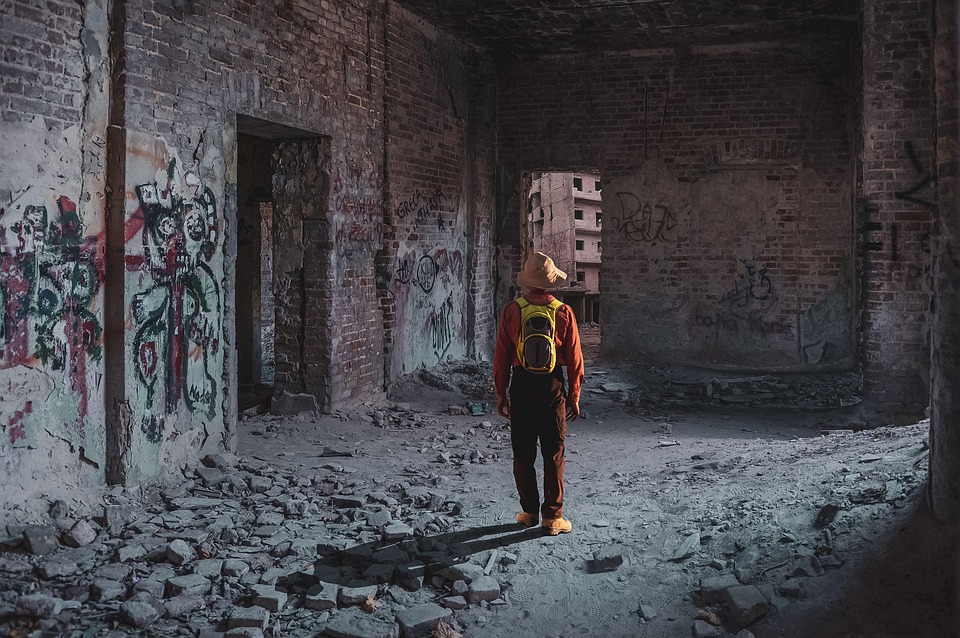
Sex Offenders
May 26, 2025
Criminology and Hurricane Katrina
May 27, 2025Introducing criminology, zemiology and social harm
In some respects, this can be seen as rationalised through traditional theories of crime, arguing that criminal (or harmful events) can be explained through the actions or inaction of particular individuals, groups or organisations: problems are explained by what people do or do not do. However, a social harm approach to criminology suggests that the causes of harm might lie not in particular actions, but in structures of inequality which underlie the harmful outcomes. These structures of inequality may be present whether or not a ‘natural disaster’ strikes, but they are amplified and made much more apparent when it does.
Structural inequalities can be seen as the systematic and persistent differences between social groups in the ownership of, or control over, valued resources which result from the organisation of societies and their institutions. For example, there are inequalities in access to wealth between males and females in all societies, and most scholars accept that the inequalities are not a result of any kind of ‘natural’ or chosen differences, but are a result of structures – be they political, legal, historical social, cultural, or economic – that maintain such inequality. In the USA, inequalities between social classes and between ethnic groups can be seen as structural in terms of who is more or less likely to have access to prestigious and well-paid jobs
In the context of Hurricane Katrina, inequalities of power (particularly the power to influence government policy) and material resources were arguably at the root of the harms that followed the hurricane.
From this perspective, rather than a ‘natural disaster’, the hurricane was a ‘natural event’ but it was New Orleans’ structures of inequality that transformed it into a ‘disaster’. Such structural inequality meant that many disadvantaged residents of New Orleans bore the greater risks from hurricanes For example by being housed in areas more susceptible to flooding and through the lack of political influence to leverage state-support to respond to or withstand the effects of the hurricane
Evidence has indeed been cited to support the argument that Hurricane Katrina had a disproportionate impact on particular social groups. Some U.S. research has suggested that the costs of Hurricane Katrina in terms of lives, housing, education, healthcare and employment were disproportionately borne by the some of the most vulnerable, including the poor, older people, and also suggesting a gendered impact reflecting gender inequality as well. Furthermore, ethnicity was seen as a particularly significant factor in terms of who was affected (Hartman and Squires, 2006b).
Structures of inequality have also been particularly highlighted in relation to ethnicity: according to the Huffington Post (Asante-Muhammad and Patterson, 2016) ‘more than 30% of black households are under the poverty line ($23,850 or less for a family of four), compared to just 4.9% of white households’, while CBS News ranked New Orleans as the fourth highest in its study of cities with greatest inequality of the top 100 richest U.S. cities (Picchi, 2018).
The role of structural inequality in any context is contested and how it is viewed can be seen as strongly connected to political and economic ideologies that dominate. In the USA, arguments are often put forward about freedom of opportunity for all (‘The American Dream’), and the potential for mobility and responding to situations of disadvantage. On the other hand, many would point to the complex nature of structural inequality where multiple inequalities – in health, education, neighbourhood, ethnicity and environmental risk for example – mean that opportunities and abilities to respond to adversity are much more limited. It has further been argued that the harms associated with structural inequality need to be highlighted for the significance that they have
Some sociological approaches have long recognised that crime is not just a question of who breaks the law, but also about who makes the law and how it is enforced.
Issues of power and inequality affect what types of actions are seen as illegal and what sort of people are more likely to be seen as offenders. Power can be defined as ‘the ability to influence and control people, ideas and events’ (Drake and Scott, 2019, p. 21)
Johan Galtung and structural violence
Galtung discussed structural violence through a range of contexts and examples, but his classical one was ‘that if people are starving when this is objectively avoidable, then violence is committed’ (Galtung, 1969, p.171). Thus through this perspective, people living in housing or geographical locations known to be at more risk from hurricane damage, and/or being vulnerable to being unable to escape unscathed (physically, psychologically or in terms of longer term life-chances), and/or less able to challenge the political or economic system which may be underpinned by racism and other social inequalities, then they are affected by structural violence.
Galtung (1969, p. 173) further argued that ‘[s]tructural violence is silent, it does not show – it is essentially static, it is the tranquil waters’ – thus it refers to the often unnoticed or taken for granted structures and affected livelihoods, but that need to be acknowledged and tackled to achieve a real peace.
Galtung’s arguments, which continue to be influential, have clear implications from a zemiological perspective. However, the arguments also have salience for some criminological perspectives too. In the next two sections you will look, in turn, at a criminological and then a zemiological perspective on understanding Hurricane Katrina and in terms of seeking justice in relation to it. In the first of these, the role of existing or potential legal avenues concerning crimes of negligence and potential compensation will be examined. In the second, you will look at how a social harm focus takes an alternative perspective, enabling consideration of the wider implications of the harms of structural inequality.


